#endangered art
Text
Art of the Brick Lego Exhibition Announces a Return to Melbourne
The record-breaking Art of the Brick Immersive Experience LEGO exhibition, that has become a global phenomenon, will return to Melbourne at The Showgrounds from April 14th 2024.
Based on the work of Nathan Sawaya, a former New York City corporate lawyer turned world-renowned contemporary LEGO artist, The Art of the Brick offers an entirely new perspective on art. This unique exhibit version uses…

View On WordPress
#3D mapping#all ages#April 2024#art and play#art appreciation#art collaboration#art exhibition#art innovation#art phenomena#art tickets#art tour#art world#artistic expression#artistic LEGO#Australia debut#awe-inspiring#Big Swimmer#certified professional#childhood toy#contemporary art#creative art#creative expression#cultural events#Dean West#digital art#digital projection#endangered art#endangered species#family-friendly#global phenomenon
1 note
·
View note
Text


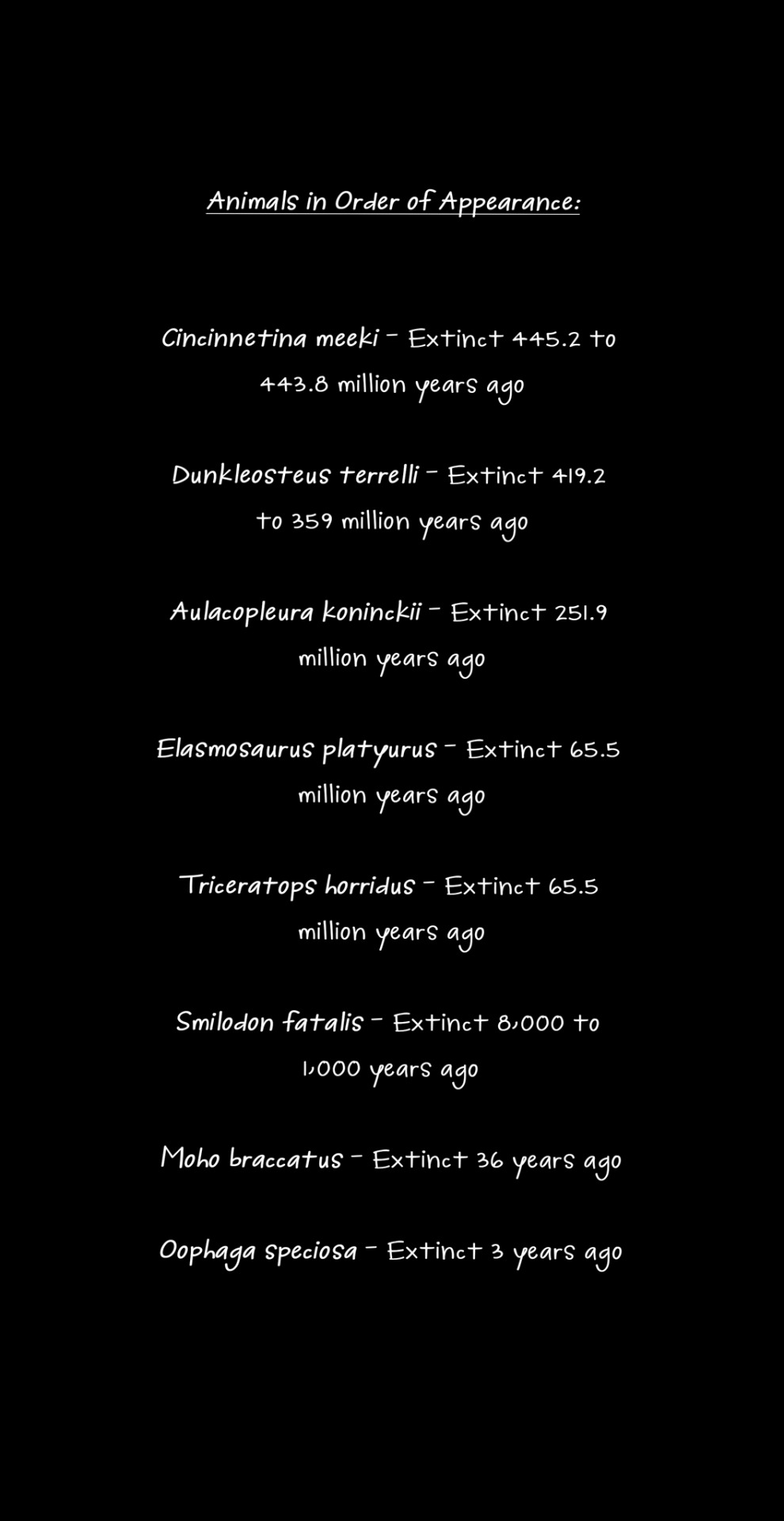

text from porter robinson's "goodbye to a world"
every single animal in this comic is extinct. it's not too late for the ones that are left.
edit: thanks @mudcrabmassacre for the correction, smilodon fatalis did not in fact go extinct in 1023 AD. the actual prediction is around 10,000 years ago - I think i may have missed a zero or two.
#comic#art#environment#conservation#animals#extinct species#fossils#climate change#dinosaurs#ancient life#endangered species#endangered animals#comics#artists on tumblr#digital art#digital comic#my-art
10K notes
·
View notes
Text
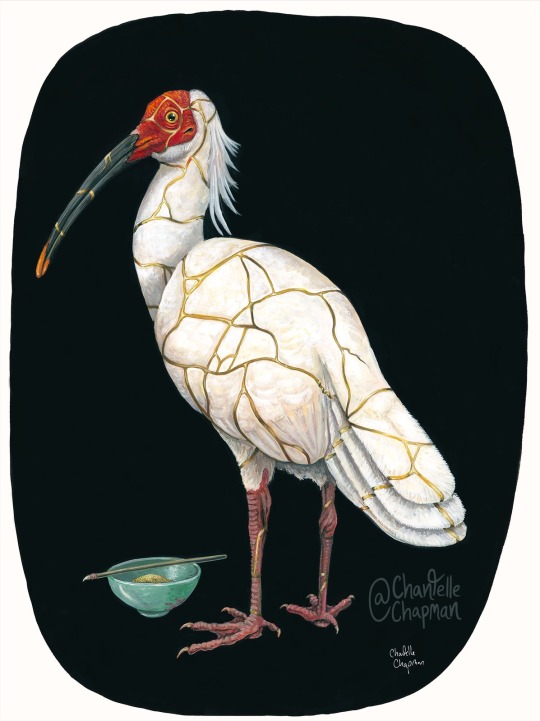
Two hundred years ago, the wetlands of Japan rustled with pink-tinged feathers. Tall, pale birds stepped carefully through reeds and iris, hunting small fish, crabs, and frogs.
Nipponia nippon, it would be dubbed by the national ornithological society, a bird emblematic of its country. The Crested Ibis. The Toki. The Peach Flower Bird.
Marshes slowly changed to rice fields, with farmers who resented the toki for ruining crops; to kill the birds was outlawed, so children chased them from the fields, singing warnings.
The doors of the country were pried open. Laws changed. Farmers bought their first guns, their sights set on birds who were no longer protected. The toki, the red-crowned crane, and many others began to suffer. But the worst was yet to come.
Pesticides are indiscriminate killers. The poison sprayed to kill a beetle can travel up the foodchain, toppling a cascade of larger animals, or affecting their ability to reproduce. It was reckless pesticide use that nearly wiped out the Bald Eagle. In the rice fields, the peach-flower-bird had little chance.
In 1981, Japan’s last five living toki were removed from a wild that had become too dangerous for them.
I tell a lot of sad stories here, about mistakes we’ve made and animals we’ve lost. This isn’t one of those. This is a story about one of those precious times when we were able to fix the things we’d broken.
A joint effort between Japan & China, and the discovery of seven more birds in that country, led to a successful breeding program, which in 2008 saw the first ibises fly free again in Japan. Today, at least 5000 toki exist in the world.
The last wild-born toki, one of those captured in 1981, lived almost long enough to see her species’ return. Reaching the equivalent age of a centenarian human, she died in 2003—not of old age, but injury after throwing herself against her cage door.
Her name was ‘Kin’. ‘Gold’.
Mended things can never be as whole as they once were. There will always be cracks that show, weak spots that remain vulnerable. Yet, like the shining seams of a kintsugi piece, these scars speak an important truth: here is a thing that someone chose to save; handle with care.
The title of this painting is ‘Restoration’. It is gouache on 22x30 inch watercolor paper
#bird art#endangered species#extinct in the wild#toki#crested ibis#extinction stories#series: we try to fix what we’ve broken
4K notes
·
View notes
Text

The Galápagos penguin is endemic to the Galápagos Islands and is the rarest penguin. Because they can't breed when ocean surface temperatures are above 25C, they're especially affected by climate change. Ecotourism is also a threat, due to littering and irresponsible birdwatching.
805 notes
·
View notes
Text
Doodle time! (Forgive the mess) qwq

Doodle time!
I'm rolling on the floor, laughing out loud, one of the best Royal Au side-story chapter of all time. (tw +18 Fic)
Dedicated to Askellie and Esino
Dream & Night belongs to Jokublog
Killer by RahafWabas
Horror by Sour-Apple-Studios
Cross by Jakei // Lv20 Cross by Wormy
#aoi-kanna#my art#undertale au#random stuff#dreamtale#horrortale#Cross is angry#a fool has just endangered everyone's safety and he doesn't waste a second to keep his protected people safe#utmv#royalty au#royaul
1K notes
·
View notes
Text

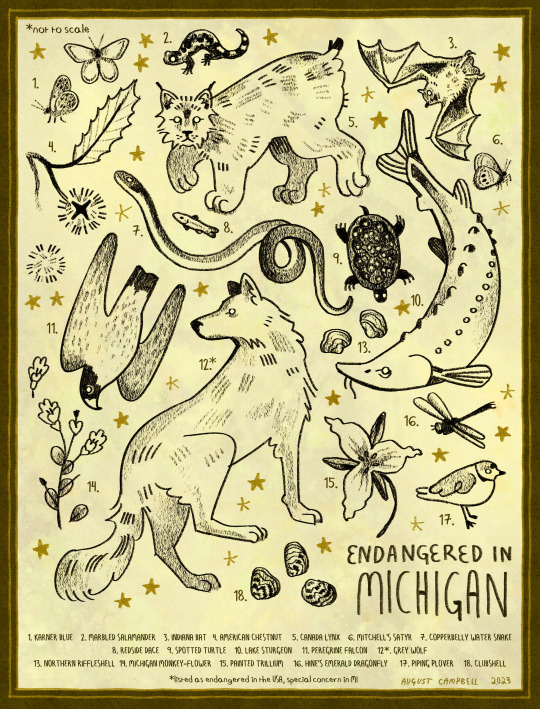
ENDANGERED IN MICHIGAN [redraw]
1. karner blue 2. marbled salamander 3. indiana bat 4. american chestnut 5. canada lynx 6. mitchell's satyr 7. redside dace 8. copperbelly water snake 9. spotted turtle 10. lake sturgeon 11. peregrine falcon 12*. grey wolf 13. northern riffleshell 14. michigan monkey-flower 15. painted trillium 16. hine's emerald dragonfly 17. piping plover 18. clubshell
*listed as endangered in the USA, special concern in MI
#my art#art#endangered species#michigan flora#michigan fauna#michigan wildlife#biology art#conservation#north american wildlife
2K notes
·
View notes
Text

devils hole pupfish
#my art#digital art#environmentalism#devils hole pupfish#fish#fish art#retro art#retro inspired#nature art#conservation art#endangered#krita#artblr#artists of tumblr#artists on tumblr#tumblr artists#pop surrealism#lowbrow art#animal art
320 notes
·
View notes
Text
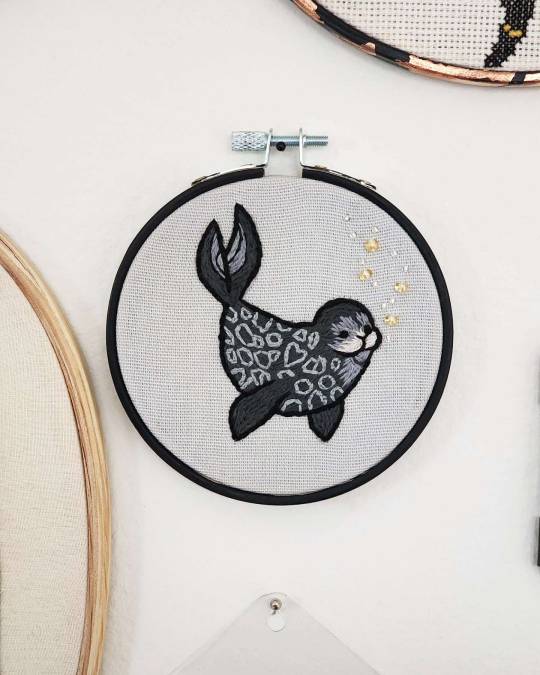
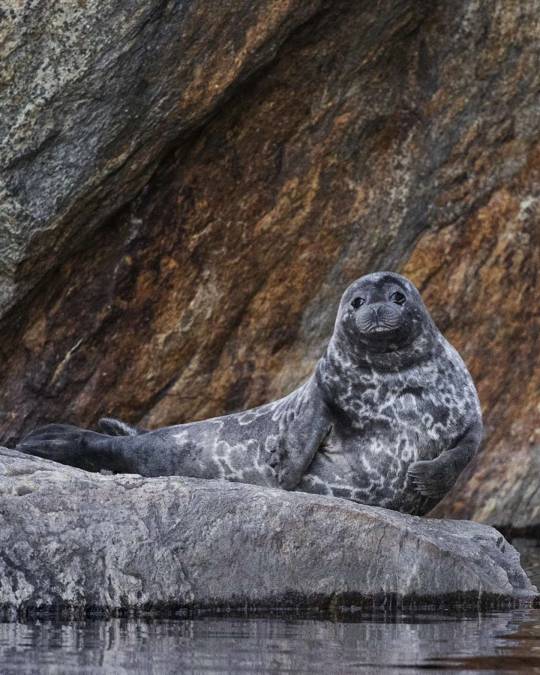
Special interest infodump time [facilitated by an art challenge I'm taking part in over on my instagram] this episode: The Saimaa Ringed Seal!
The Saimaa Ringed seal is a subspecies of ringed seal endemic to Lake Saimaa in Finland. They have evolved separately from other species of glacial ringed seals for nearly 10,000 years after being separated in the forming of Lake Saimaa during post glacial rebound at the end of the last ice age. That prolonged and continued period of isolation has caused them to have broken off into their own, incredibly rare geographically specific and small numbered morphology [other animals to exhibit this include the Devil's Hole Pupfish of death valley]. Due to this nature, while they face endangerment due to the same reasons as many other seals [bycatch mortality, hunting, pollution etc] they also face it purely from a rarity angle, isolated species populations in the sub-1,000s are always going to be incredibly delicate by virture of not having the "padding" of large count numbers on their side.
That said! Conservationists in Finland work closely with the government to do their best to make sure these adorable freshwater seals have the best shot they can at sticking around, and Metsähallitus was very excited to report that this year was a record-high year for Saimaa Ringed Seal pups! Noting that their annual census for 2023 counted 100 pups [the highest count they have ever had! And a HUGE number considering the overall population of the species is estimated around 410 total seals] The organization thinks it's possible the continued increase may be caused by recent net fishing bans in certain parts of the lake allowing more seals to survive to reproductive age, and hope the bans can continue to expand to further parts of the lake as well to increase this encouraging and exciting momentum.
Onnea teille pikku hyljit!! 🦭🩵🇫🇮
#embroidery#saimaa ringed seal#fiber art#fibre art#animal art#endangered species#conservation#marine biology#seals#traditional art#beadwork
534 notes
·
View notes
Text
did you hear there’s a new short film that is GAY?? LESBIAN, even???
AND it’s filmed in a minority language?? a CELTIC language, one might say??
AND that it’s available for FREE, with SUBTITLES in both irish AND english??

“FAN” (2024) dir. cúnla ní bhraonáin morris
watch here 🫶
#fan#fan film#short film#irish film#irish short film#gay short film#lesbian#gay#irish#gaeilge#irish language#langblr#minority language#endangered language#gaelic#irish art#irish gaelic#stay#gearrscannán#gael#celtic#irish langblr#bloc tg4#romcom#comedy#lighthearted#romance#gay romance#lesbian romance#fan 2024
246 notes
·
View notes
Text



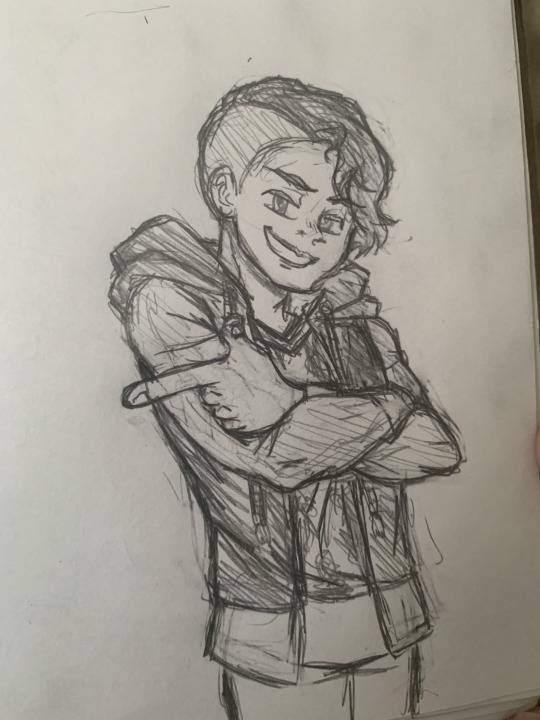

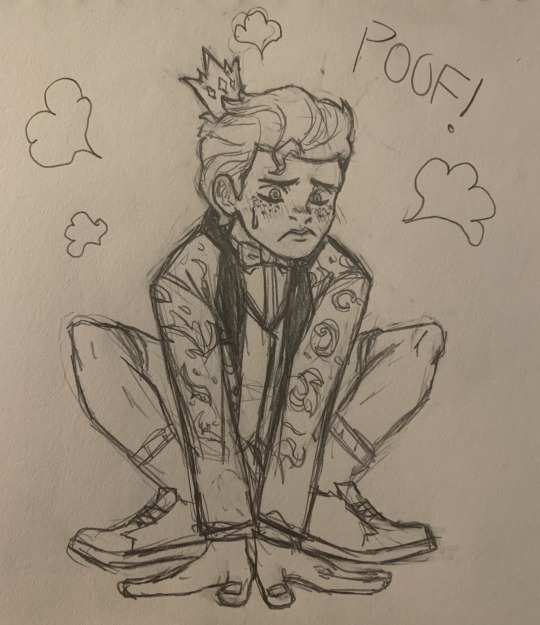


dumping a bunch of misc. ever after high stuff i’ve drawn in the past few months on here.
excuse the quality of these, they’re the oldest ones. i have a handful. the more recent ones are a lot better.
#truthfully this is the only real reason i’m actually posting on tumblr again#i can’t keep gatekeeping my eah fan art from the last three remaining eah fans#it’s like holding the power to revive an endangered species#eah#eah fanart#ever after high#raven queen#apple white#briar beauty#dexter charming#daring charming#darling charming#hopper croakington ii#hunter huntsman#sparrow hood#duchess swan#duncart
264 notes
·
View notes
Text
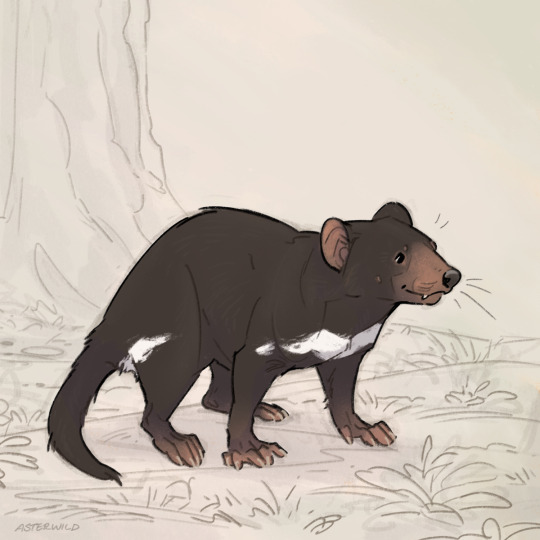
The Tasmanian Devil (Sarcophilus harrisii) is a small marsupial with a big reputation. They have one of the highest bite forces relative to body size of any mammal. Though they're primarily scavengers they will also hunt fresh meat, and often consume the entirety of their prey, bones and all.
Tasmanian devils are considered endangered. The biggest current threat is Devil Facial Tumor Disease, a contagious cancer first identified in 1996. Vehicular strikes, dogs, and hunting and trapping have also played a role in depleting devil populations.
Beginning in 2020, Tasmanian devil reintroduction has begun in mainland Australia, where they had been absent for over 3,000 years.
#id in alt#tasmanian devil#animal art#wildlife#endangered species#''those are real'' series#the only thing worse than my art block currently is my writing block i'm so sorry
196 notes
·
View notes
Text

Fetching the betrothed
#my art#kpz naruto founder au#kpz firestorm 🔥#izuna uchiha#she won’t use that weather manipulation bs when she’s holding his cat#and he won’t endanger his cat 💀#so easily retrieval#knfau 🖼️#Izuna x Mate#OC: mate
158 notes
·
View notes
Text

Aw, shucks. I'm too bashful to come out of this cave.
Alabama Cavefish (Speoplatyrhinus poulsoni)
Key Cave in Alabama, USA
Status: Critically Endangered
Threats: Extremely small population, groundwater pollution, dependence on the endangered Gray Bat for nutrients from its guano
#fish#fish art#cave fish#fishblr#caves#freshwater fish#conservation#endangered#north america#usa#alabama
95 notes
·
View notes
Text


making some posters for wheatpasting
can a poster convince you to love a beetle? hope so. ID in alt text
#art#ecology#sturgeon#beetles#animals#conservation#wildlife#my art#acipenseridae#silphidae#endangered species#insects
314 notes
·
View notes
Text
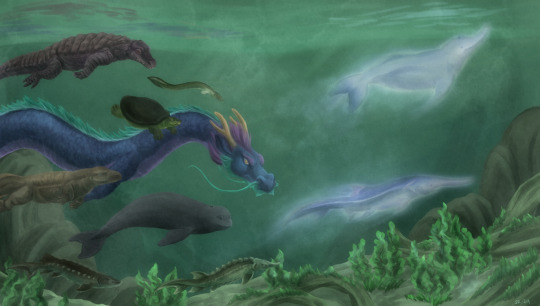
Yangtze spirits
#dragon#baiji#chinese paddlefish#sturgeon#chinese sturgeon#yangtze sturgeon#yangtze finless porpoise#porpoise#yangtze giant softshell turtle#turtle#chinese alligator#japanese eel#chinese giant salamander#wildlife#endangered#extinct#art#artblr
124 notes
·
View notes
Text
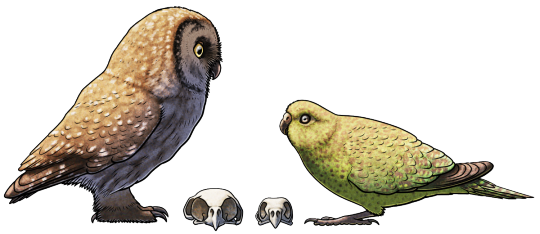
Strange Symmetries #23: Convergent Earvolution
Although it's not visible externally, owls have one of the most striking modern examples of asymmetry. The ears of many species are uneven, with the right ear opening positioned higher up than the left, giving them the ability to pinpoint the sounds of their prey much more accurately.
But surprisingly this isn't a unique anatomical trait that only ever evolved once in their common ancestor.
Instead, multiple different lineages of owls have actually convergently evolved wonky ears somewhere between four and seven separate times.
The boreal owl (Aegolius funereus), also known as Tengmalm's owl, is a small 25cm long (~10") true owl found across much of the northern parts of both Eurasia and North America. While most other owls' asymmetrical ear openings are formed just by soft tissue, the boreal owl's lopsided ears are actually visible in the bones of its skull.
But despite how many times owls have convergently evolved asymmetrical ears, and how successful this adaptation has been for them, for a long time it seemed to be something that no other animals have ever mimicked.
In the early 2000s asymmetric ears were reported in the skulls of some troodontid dinosaurs, which seem to have been nocturnal hearing-based hunters similar to owls, but proper details on this feature still haven't been formally published.
Then, just a couple of weeks ago, another example was finally announced.
The night parrot (Pezoporus occidentalis) is a small ground-dwelling parrot found in Australia, close to the same size as the boreal owl at around 22cm long (~9"). Critically endangered and very elusive, it's rarely seen and little is known about it – and it was presumed extinct for much of the 20th century, until more recent sightings of living individuals confirmed that the species is still hanging on.
Recent studies of preserved museum specimens have revealed that it seems to have poor night vision but excellent hearing, and that its right ear opening is noticeably asymmetrical, bulging out sideways from its skull. Much like owls the night parrot relies on acute directional hearing to navigate in darkness, but since its diet consists mainly of seeds it's probably not using this ability to locate food sources. Instead it may be listening out to keep track of the precise locations of other parrots, and for the approach of predators – so its sharp sense of hearing may be the reason this unique bird has so far just barely managed to survive the presence of invasive cats and foxes.
———
NixIllustration.com | Tumblr | Twitter | Patreon
#science illustration#not paleoart#boreal owl#tengmalm's owl#aegolius funereus#strigidae#strigiformes#owl#night parrot#pezoporus occidentalis#psittaculidae#psittaciformes#parrot#dinosaur#bird#modern dinosaurs#art#a superb owl#endangered species#convergent evolution#still seems to be an adaptation unique to birds and stem-birds tho
1K notes
·
View notes